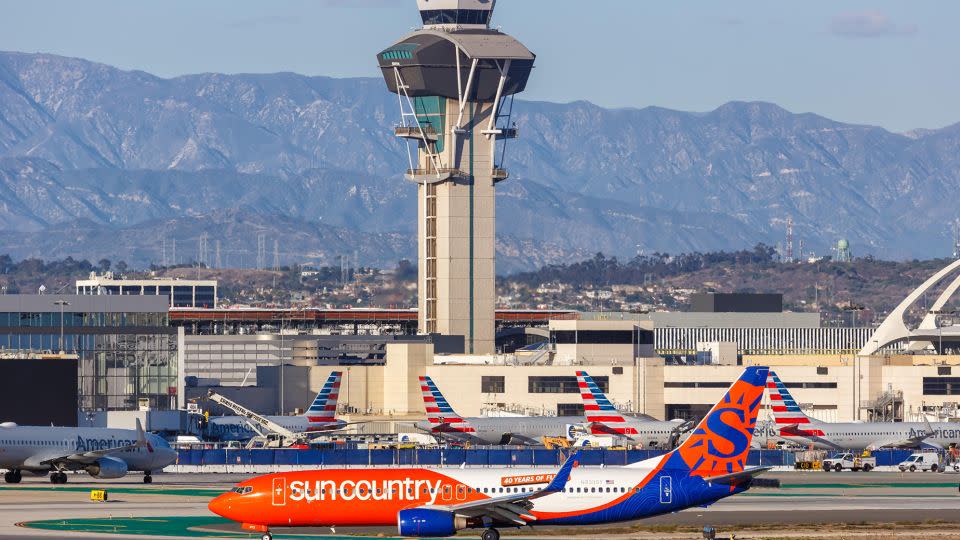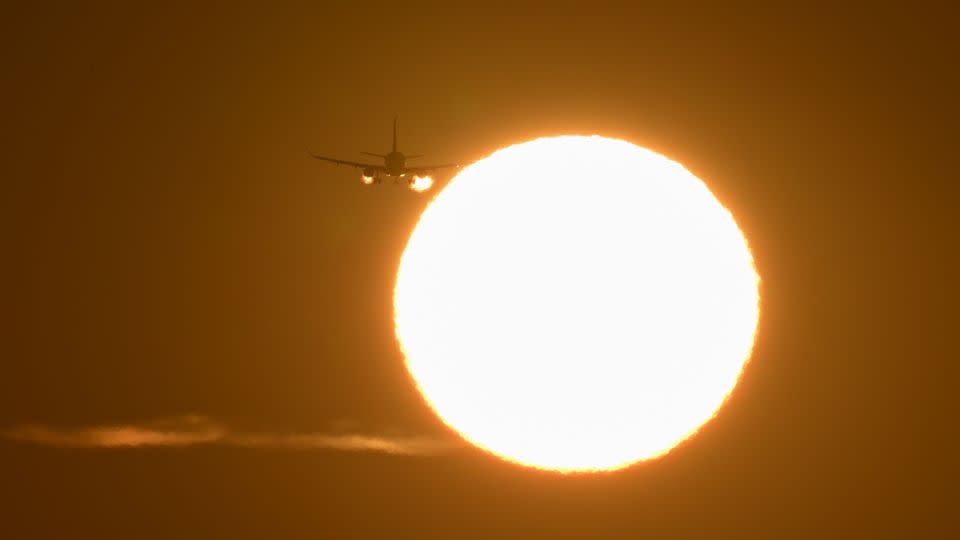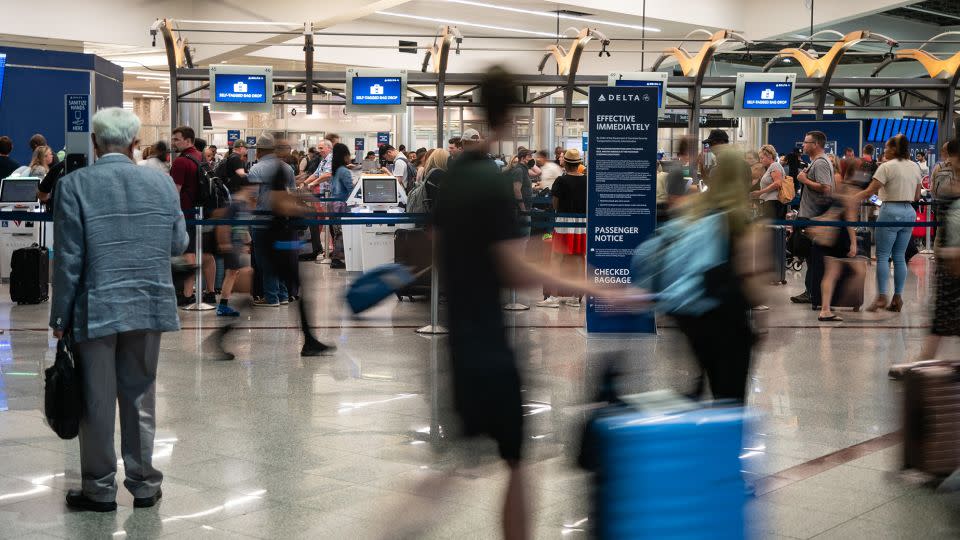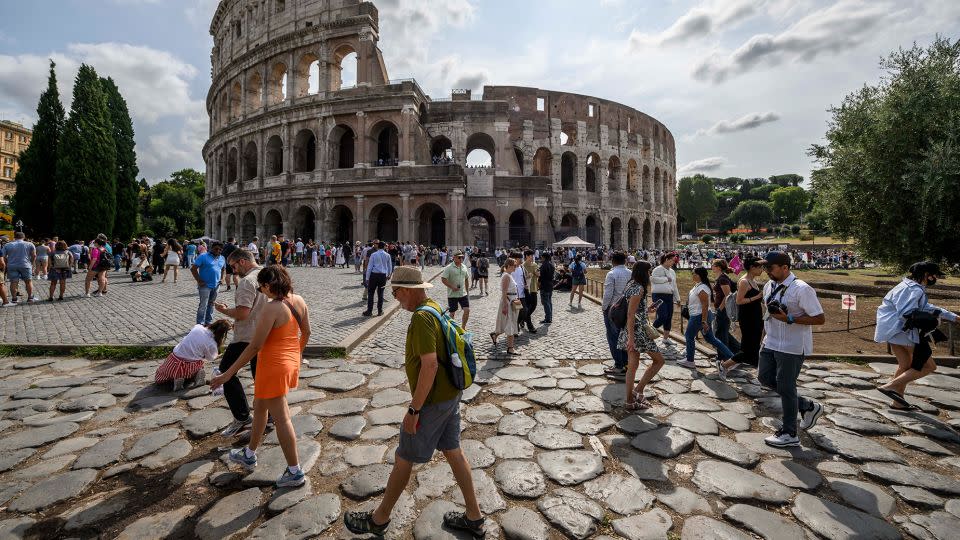Brace yourselves. These are the hurdles for air travelers this busy summer
If you’re expecting to take to the skies this summer, you should also expect lots and lots and lots of companionship. And a few hurdles, too.
Memorial Day weekend, the traditional launching pad of the summer travel season, is shaping up to set a scorching pace. The Federal Aviation Administration has forecast the holiday to be its busiest in 14 years.
The Transportation Security Administration expects to screen 18 million passengers and crew between Thursday and Wednesday – up more than 6% over last year. TSA says it’s prepared for its busiest summer ever.
American Airlines and United Airlines are both expecting about 10% more passengers over the holiday weekend than last year. United is expecting the biggest Memorial Day and summer travel season in the airline’s 98-year history, according to Andrew Nocella, United’s executive vice president and chief commercial officer.
When it comes to navigating the flocks of fellow flyers, don’t look for much of an ease-up after Memorial Day weekend.
US airlines are predicted to carry 271 million passengers around the world from June 1 to August 31, according to industry trade organization Airlines for America. That’s a 6.3% increase from last summer, and a new record for US airlines.
To meet the higher demand, Airlines for America said that US carriers will offer more than 26,000 scheduled flights a day – up nearly 1,400 a day from summer 2023.
While US airlines have staffed up and the TSA says it’s ready for the summer crush, an air traffic controller crunch, hot weather and crowded airports could bring flight disruptions and pain points.
Air traffic controller shortage

Despite a surge in hiring last year, air traffic control stations nationwide are still about 3,000 controllers short, according to new FAA numbers.
The numbers show the challenge of filling the gap that led to flight delays and concerns that fatigue contributed to a series of near collisions on runways last year.
The current understaffing means controllers at many facilities are regularly working overtime to cover gaps. The shortage is a concern of airlines, controllers and watchdogs alike.
Scott Keyes, founder of travel site Going, said that because of the way air traffic control maps are divvied up, airports in New York City metro area and in Florida have a slightly higher chance of being affected by air traffic control issues.
“I wouldn’t, you know, not take that trip to New York or to Miami because of air traffic control,” he said in an interview with CNN Travel. People flying in and out of those markets should try to get early morning flights and nonstop flights to help minimize problems if they come up.
“I was flying to New York a couple days ago and my flight to New York got delayed by four hours,” Keyes said. “It was a pain in the butt – don’t get me wrong. But that just meant I arrived in New York four hours later.
“If I had had a connection in Chicago and my flight was delayed by four hours, I would have missed that connection. And then it’s a much more hairy situation.”
Hot weather and hurricanes

Much of the United States is looking at varying probabilities of having higher temperatures than the average for summer – especially in the Northeast and desert Southwest.
Extreme heat can do more than make you feel miserable. It also affects airlines’ abilities to carry out normal schedules, according to a report from Embry‑Riddle Aeronautical University.
“Hot air is thin air. While this reduces the lift on which planes rely for takeoff, the main impact is felt on engine thrust. Aircraft engines will produce less thrust during takeoff and ascent as a result,” said Bob Thomas, assistant professor of aeronautical science. “The only way to make a takeoff possible on shorter runways would be to lower the weight of the aircraft.”
He said airlines generally reduce weight by removing baggage or passengers, especially as temperatures reach the triple digits. Cancellations are even possible. The report suggested trying to book early morning and late evening flights when you expect to fly in hot weather zones.
Experts also warn that as the effects of climate change increase, passengers can expect longer periods of turbulence during flights in coming years. Says one professor of atmospheric science: “The seat belt sign will be switched on a lot more.”
And if you haven’t heard, meteorologists warn we’re phasing out of an El Niño cycle in the equatorial Pacific (with warmer waters) and phasing into a La Niña period (with cooler waters). And La Niña can sometimes generate increased hurricane activity along the US Gulf and Atlantic coasts.
In fact, forecasters predict a “hyperactive Atlantic hurricane season” with eight to 13 hurricanes. They think four to seven of them could reach at least a strength of Category 3, which have sustained winds of 111 to 129 mph. (The hurricane scale goes up to Category 5, which has sustained winds of 157 mph or more.)
Bottom line, especially as summer progresses into peak hurricane season: Keep your eye on the forecasts if you’re scheduled to fly.
Crowded airports

Passengers will need to pay attention to their ground game this summer, said Keyes.
“Here’s how I put it: Airports are going to be extremely full. Airplanes are only gonna be pretty full.”
Keyes said new plane deliveries and additional flights will ease the load factor. “There’s about 10 to 15 percent more capacity this year than there was a year ago. And … more seats mean there’s going to be more elbow room for folks this summer even during the busy travel season.”
That won’t help in the crowded airports, though. He has a couple of tips to mitigate that.
First, get TSA PreCheck and/or Fast Track so you can at least bypass possible security line bottlenecks.
Secondly, Keyes says he likes to find a quieter, more restful pocket of the airport away from his gate in which to hang out before his flight. He downloads the airline’s mobile app, which notifies him just before boarding is about to start.
Silver lining for flyers

For those flyers who must carefully consider every dollar they spend, they could find the summer of 2024 to be a less expensive one than last year.
Travel site Kayak reports that summer fares should be lower.
For US domestic flyers, fares should drop an average of 13% compared with 2023. Mexico is seeing an even bigger drop with fares averaging 16% less. And if Australia is a dream trip of yours, those fares are falling an average of 14% (though the average price is $1,509, Kayak says).
For people scared off from Europe last summer by the crowds and high prices, Keyes had some good news.
“I think a lot of that pent-up demand [from the pandemic] has been exhausted. I think you’re going to see higher supply, lower demand and cheaper fares to Europe this summer as a result.”
Kayak is showing a 7% dip in Europe fares compared with last summer.
While hardly typical, Keyes said he’s recently spotted some round-trip mega-bargains that were almost nonexistent last summer: Paris for $570, Iceland for $475 and Dublin for $457.
CNN’s Senior Climate and Weather Editor Angela Fritz contributed to this report.
For more CNN news and newsletters create an account at CNN.com

 Yahoo News
Yahoo News 
